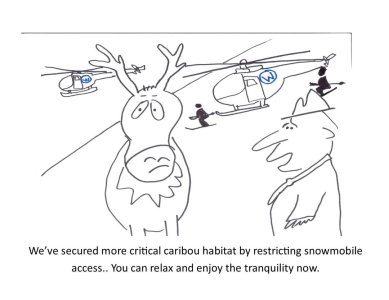moyiesledhead
Active VIP Member
From what I understand, the predators are able to stay on top of the snow on setup sled tracks where the caribou still sink making it easier for them to hunt down the caribou.
Speaking strictly on "Mountain" Caribou, this statement is false. Although it's true that sled tracks in the mountains "could" make it easier for predators to move around, the reality is predators have no reason to leave the valley bottom smorgasbord of ungulates in the winter to wander off into the mountains on the off chance of finding a Caribou. Any "credible" biologist will tell you that. Mountain Caribou don't die in the winter. They get eaten in the summer.






